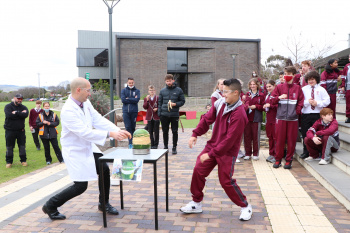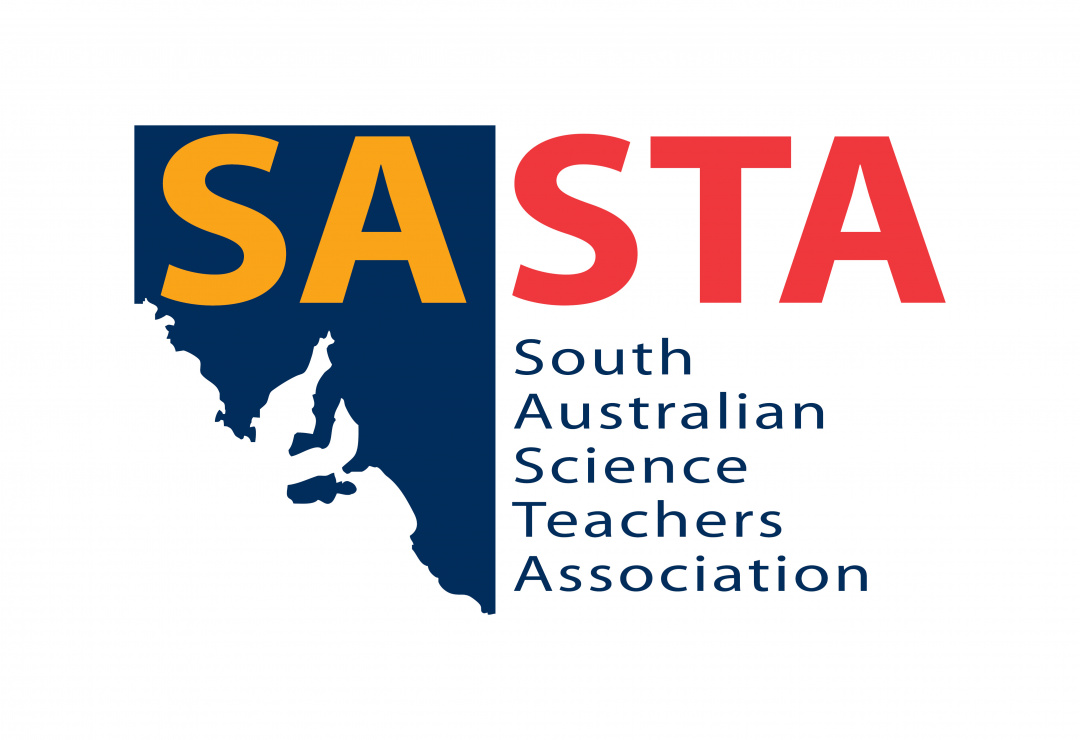Posted by SASTA
on 10/09/2021

National Science Week is Australia’s annual celebration of science and technology. Held in August each year, it features more than 1,000 events around Australia. Gleeson College celebrated by hosting a week of rolling events to inspire the inner scientist within everyone. This year’s theme, Food: Different by Design, aims to promote sustainable farming to reduce pollution, conserve water and protect the environment.
Throughout the week, Care Groups and staff were challenged every morning to a Science Quiz, with questions varying from the Science Week theme of ‘Food’ and Nutrition, to general science knowledge and famous science communicators.
Our guest presenters, Sophie Dolling from The University of Adelaide and Melissa Raynor from The Foodprint Experience Café, gave insightful talks during lunchtime activities. Sophie talked about the chemistry behind taste. Her Flavour Chemistry: The Science Behind the Taste and Smell of Food presentation was a hit among students. To understand what senses we use for descriptive analysis and how flavour and aroma are researched on a chemical level, students were given mystery samples of everyday food items. This was an engaging and fun way to learning about chemical compounds in food and the scientific equipment, spectrophotometers, and how they’re used in research. Tasting sustainably sourced food along with kefir and kombucha drinks was a massive hit as well. The Foodprint Experience Café owner, Melissa Raynor talked about the carbon footprint from the foods we eat. Reducing this footprint can positively impact climate change as the distance from farm to fork and rotting unused food can account for up to eight per cent of greenhouse gases.
Midweek the Science team worked hard to decorate doughnuts, not plain doughnuts, but galaxy doughnuts. These amazing delights took inspiration from the study of space and were a crowd favourite. There was a line-up of hungry students eager to experience what a galaxy tasted like. The blue glitter glaze and edible gold dust didn’t disappoint. All proceeds were donated to Caritas in our Year of Service.
Mr Puttnins hosted The Big Watermelon Experiment, a nationally scientific experiment, to pack more into a dynamic week. This experiment aims to record data from as many schools around Australia to see how many rubber bands it takes to implode a watermelon. The crowd of onlookers and participants were surprised and startled when the watermelon imploded after 121 rubber bands. The top of the watermelon flew nearly one meter in the air, and watermelon shards splattered close to the crowd that gathered.
To finish an engaging week of science, we hosted a National Geographic movie session. We gave out popcorn and chips to compliment the movie experience. Learning about the essential role science plays in managing food production, reducing waste, and the technologies that oversee projects has helped the students understand the future direction and need of Food: Different by Design.
I hope everyone enjoyed a great National Science Week!
- Melissa O'Loughlin, Science & STEM Coordinator
 |
 |
 |
 |
 |
 |
 |
 |
 |
In this Section
Archive
- January 2026
- December 2025
- November 2025
- October 2025
- September 2025
- August 2025
- July 2025
- June 2025
- May 2025
- April 2025
- March 2025
- February 2025
- January 2025
- December 2024
- November 2024
- October 2024
- September 2024
- August 2024
- July 2024
- June 2024
- May 2024
- April 2024
- March 2024
- February 2024
- December 2023
- November 2023
- October 2023
- September 2023
- July 2023
- June 2023
- May 2023
- April 2023
- March 2023
- February 2023
- January 2023
- December 2022
- November 2022
- October 2022
- August 2022
- July 2022
- June 2022
- May 2022
- April 2022
- March 2022
- February 2022
- January 2022
- December 2021
- November 2021
- October 2021
- September 2021
- August 2021
- July 2021
- June 2021
- May 2021
- April 2021
- March 2021
- February 2021
- January 2021
- December 2020
- November 2020
- October 2020
- September 2020
- August 2020
- July 2020
- June 2020
- May 2020
- April 2020
- October 2018
- September 2018
- August 2018
- July 2018

